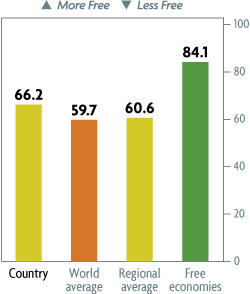The economy of Saudi Arabia is oil based and the government controls all the major economic activities in the country. Oil was discovered in Saudi Arabia in 1930s by geologists from U.S but its large scale production started after World War II (Rodney, 2004). Saudi Arabia is ranked as the largest exporter of petroleum and it accounts for 18% of proven petroleum reserves in the world. Petroleum contributes 55% of the overall GDP and it accounts for 90% of export earnings (Ramady, 2010).
Oil in Saudi Arabia accounts 75% of government revenues and it is produced by the parastatal giant Saudi ARAMCO on behalf of the government (Ramady, 2010). Saudi ARAMCO is the largest fully integrated private oil company in the world. Most of the Saudi oil exports are transported from one region to another, using tanker passing through Ras Tanura and Juay’mah; those fuels that are going to the east-west go using pipeline (Rodney, 2004).
Oil income
After World War II in 1973, Saudi Arabia became the fastest growing economy due to increase in petroleum revenues. It increased its trade in the world and the government got enough revenue for development, defense and aid for other Arab and Islamic countries (Rodney, 2004); in the mid-1980s, high oil prices led to development of many oil fields in the world leading to global oil consumption reduction.
This called for introduction of an element of planning for uncertainty for the first time, Saudi Arabia oil production which had increased in 1980-1981 by 10 million barrels per day reduced to 2 million barrels per day in 1985 and this led to government budgetary deficits (Ramady, 2010). This made Saudi Arabia to give up its role as the greatest manufacturer with OPEC and it accepted a production quota in 1985.
Since then, oil policy in Saudi Arabia has been to maintain market and quota shares in order to ensure constancy in the global oil market. The government has been encouraging private sector involvement in petroleum sector in order to expand its oil production capacity in response to the increasing global demand (Rodney, 2004).
The Saudi Arabia government has sought to allocate its petroleum income to it undeveloped oil based; it also seeks to maintain its traditional Islamic values and customs such as Hajji and Umrah (Ramady, 2010). Oil wealth has contributed significantly in improving living standards of Saudi Arabia population. It has contributed to development of infrastructure, improved education, health facilities and social services.
However its high population growth has put pressure in the economy thus straining the government in financing further improvements in living standards. Lack of skilled Saudi Arabians graduates has been leading to lack of economic diversification and development. This has led to about 4.6 million non-Saudis been employed in the economy (Ramady, 2010).
The government has however emphasized on development of private sector employment of Saudis in order to reduce foreign worker; it also aims to reduce Saudis unemployment from 9.6% to 5.5% by investing in human resource development (Ramady, 2010).
Saudi Arabia Comparisons

Hajji and Umrah
Hajji is a religious duty in the Muslim society that must be carried out in every strong Muslim who can afford it at least once in a lifetime; it is a sign of solidarity to the Muslims and their submission to God (Ham, shams & Madden, 2004). Saudi Arabia kingdom has always been guided by Islamic teachings and principles which is emphasized in the basic law.
Caring for holy places has been a top priority of the successive development plans which aims at developing the two Holy Mosques in order to facilitate performance of Hajji and Umrah (Ham, shams & Madden, 2004). Under the eighth development plan, the holy places were expanded significantly. Expansion of Holy Mosque and prophet’s Mosque were monumental achievements that enabled pilgrims and visitors to conduct their worship and rituals comfortably.
Also in the eighth development plan the stone casting bridge was implemented to enable pilgrims to perform the rituals of casting stones smoothly (Ham, shams & Madden, 2004). The ministry of Hajj was allocated finances amounting to SR3.2 billion under the ninth development plan.
This was to facilitate implementation of states directives regarding serving pilgrims and Umrah performers. The finances were also for educating pilgrims and Umrah performers and familiarizing them with regulations, rights and duties to enable them to perform rituals comfortably (Ham, shams & Madden, 2004).
Conclusion
Saudi Arabia economy is oil based and it is the largest oil producer in the world. Oil exports have contributed greatly to government revenues which have continuously been used to improve the living standards of Saudis.
The government has continued to promote private sector involvement in petroleum production in order to increase its production capacity for the increased global demand. It also seeks to maintain its traditional Islamic values and customs such as Hajji and Umrah. The ministry of Hajji was allocated finances in order to maintain the holy places for Hajji and Umrah to be conducted smoothly and easily.
References
Ham, A., shams, M., & Madden, A. (2004). Saudi Arabia. New York: Lonely planet.
Ramady, A. (2010). The Saudi Arabia economy: policies Achievements and Challenges. New Jersey: Springer.
Rodney, W. (2004). Economic development in Saudi Arabia. London: Rutledge.